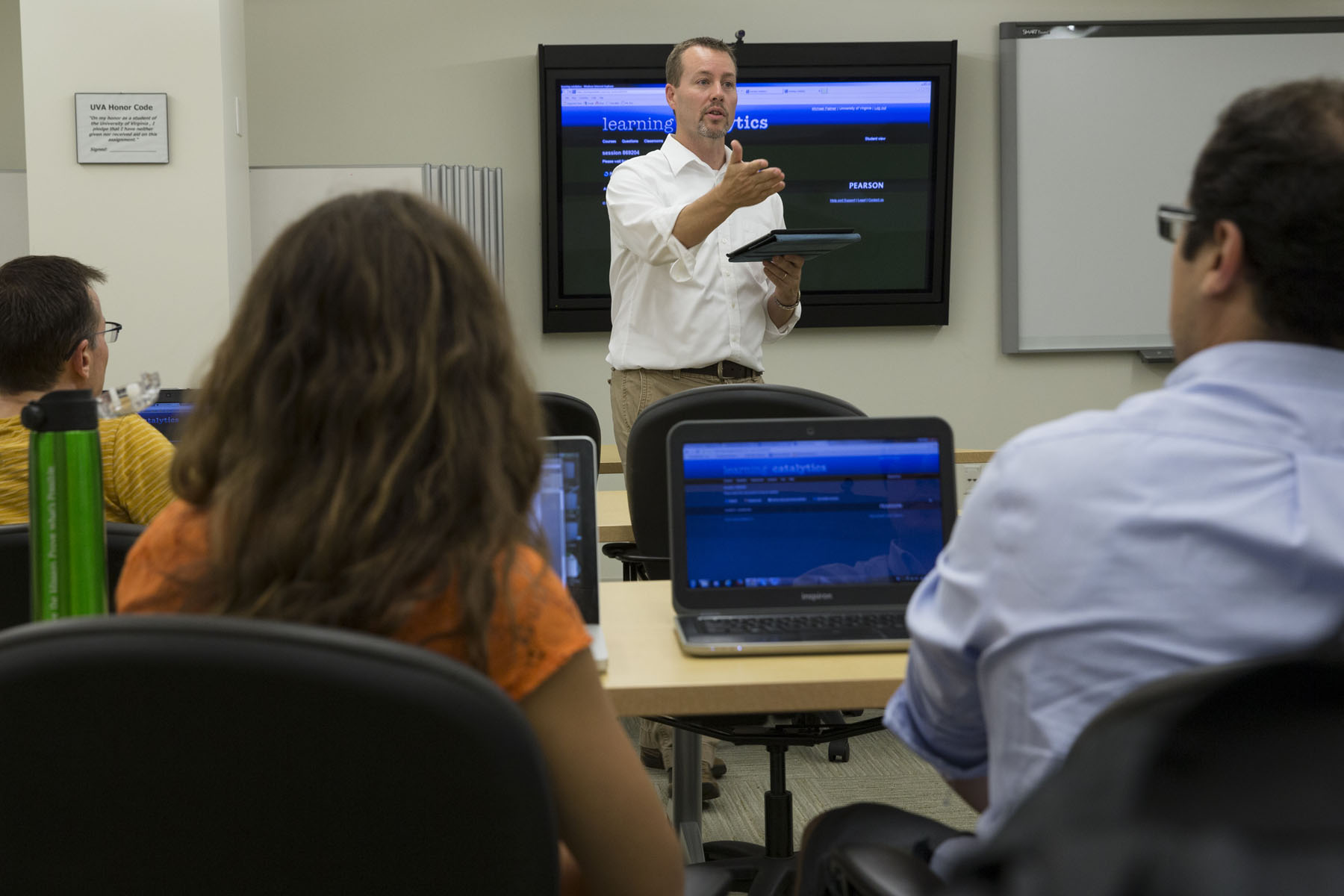A new Web-based technology could make clickers – devices that use radio waves to conduct instant classroom polls – a tool of the past.
This week, the Teaching Resource Center demonstrated the new Learning Catalytics online system, a classroom-polling platform that allows teachers to ask questions that extend beyond a clicker’s simple multiple-choice polls. A trial version of the program is available to University of Virginia instructors for the fall or spring semester.
Students can use Learning Catalytics on their laptop, tablet, smartphone or any device with an Internet connection to respond to questions, while the professor monitors the responses. Within seconds of responding, questions and results can be sent back to the students’ devices and displayed on classroom projector screens.
The tool is focused more on learning and less on assessment, said Michael Palmer, associate director of the Teaching Resource Center and chemistry professor in the College of Arts & Science. Palmer presented the tool to U.Va. instructors this week.
“Traditional clickers have been used for science and high-enrollment classes,” Palmer said. “You can use this system in all classroom sizes and in all disciplines, from a small humanities discussion to a large lecture-based classroom.”
Professors can ask nearly 20 different types of questions, which can range from drawing the graph of a function to giving an opinion on a work of art. Using Learning Catalytics, professors may also ask students to match pairs from two different columns, identify locations on a map, or rank their priorities in a given scenario.
Open-ended questions like these can spark discussion, Palmer said. He used a poem in one example and asked the instructors to “highlight the line you feel has the strongest imagery.” After they submitted their answers, lines in the poem with the most highlights became bolder on the screen.
While this type of questions may lack a “correct” answer, teachers can use the responses to fuel conversations that help hone students’ skills in argument and critical thinking. If a discussion takes an unexpected turn, professors can also use the tool to “ask a question on the fly,” Palmer said.
The system provides an instant wealth of data to professors, who can see collective information, such as how many students are getting each question right, as well as a breakdown of the responses given by each student.
“[The system] gives you individual information on student learning, rather than just aggregate answers or answers from only a select group,” Palmer said.
Teachers can use the Learning Catalytics system to arrange a class into groups for discussion based on their responses. This allows teachers to let students with a more advanced understanding of the topics help their peers, or it can also pair students with differing opinions so they can discuss and debate a given topic.
Palmer highlighted this feature during the demonstration. After collecting responses to a question on dipole moments in chemistry, he used the system to create groups that mixed “students” with the correct answers with those who submitted incorrect responses. The “student-teachers” were then given the names and nearby locations of the people in their group to discuss their answers.
Responses to questions don’t need to be instant – professors can also use the system to assign homework. Because the information is stored in a cloud-based system, students can go back and see their answers from class earlier in the day or start homework assignments the instructor has assigned for that evening. After submitting their responses, students can view the correct answers and read any notes the instructor posts online.
After a free trial semester, students will have to pay for a subscription (currently $12 for six months or $20 for a full year, according to the company’s website) if the professor chooses to use the Learning Catalytics system in the classroom, Palmer said. He expects Pearson, the company that owns Learning Catalytics, will begin bundling its textbooks and other classroom materials with the new system.
For information on using Learning Catalytics at U.Va., email Palmer at mpalmer@virginia.edu.
— by Lauren Jones
Media Contact
Article Information
August 15, 2013
/content/beyond-clickers-teaching-resource-center-debuts-new-classroom-technology

